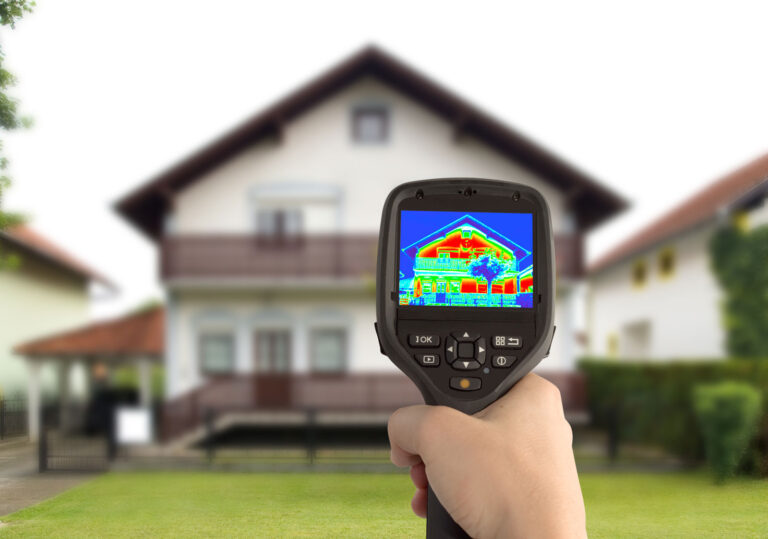Save 13% In Home Cooling Cost Through Attic Ventilation
Have you ever heard of the term attic thermal conduction? The phenomenon occurs when there is excessive accumulation of heat in an attic space due to a lack of ventilation. By simply improving your home’s attic ventilation, you can save up to 13% in energy costs during hot summer months.
Thermal conduction and its consequences
Thermal conduction is a scientific term used to explain how energy contained in hot particles, such as air, gets transferred to cooled particles causing cooler surfaces or objects to warm up. To put this in simpler terms, this phenomenon leads to hot surfaces/areas warming up cooler surfaces/areas. Hence during hot summer days, when the sun hits the roof causing its temperature to rise quickly, the heat from the attic space gets transmitted to the ceiling which later transfers over to inside the living space. When this happens, homeowners tend to feel heat radiating from the ceiling or get the impression their HVAC system isn’t working properly as the general temperature in the home rises to uncomfortable levels. This phenomenon is often seen in attic spaces lacking ventilation as the rising temperature generated by the sun has no means to escape before being transmitted back down towards the ceiling.
It is important to understand that no matter how much ventilation a roof contains, it is 100% normal to have a rise in temperature during hot summer days. One might now ask; how do I determine if my home has sufficient attic ventilation? The answer to that question is to monitor your attics temperature such that it stays within a given ranges:
- Peak hours (PM hours till sunset): the attic temperature should be within 10-15 degrees Celsius of the exterior temperature.
- Overnight (sunset till sunrise): The attic temperature should manage to come back to within a few degrees of the exterior temperature. This is critical as good attic ventilation requires to eliminate the accumulated thermal mass contained within the attic overnight, allowing for a fresh start every morning.
Save 13% in energy costs by installing Ventilation Maximum ventilators
The test was done on a home located in the greater Montreal area in Quebec, Canada. Here are the construction specifications of the home:
- Year of construction: 2002
- Window Orientation: East/West
- Surface area of insulated ceiling space: 1100ft2
- Attic composition: Vapour barrier with R-45 insulation.
- Existing ventilation system: 6 slant-back (turtle vents) roof ventilators totaling about 250in2 NFA.
- Roof type: 4 sloped.
- Vented soffits: 12in vented soffits on all 4 sides representing nearly 4ft2 NFA.
The roof of this home had to be redone back in May 2021 and upon putting in a new roof, the attic ventilation system was changed. The 6 slant back roof ventilators were removed and replaced with 2 of our own VMAX-303-12 sloped roof ventilators.
Throughout the summer, we monitored the energy bills and compared them month over month to the previous year to see how much of a change this would generate. When comparing the months of May, June, July, and August 2020 to those of 2021, here’s what we observed:
- In 2021, the average monthly temperature for all 4 months was 1 degree Celsius hotter in than in 2020.
- The home saw an energy cost reduction ranging from 12-14% when comparing the same monthly invoices, year over year.
- The attics average monthly temperature also saw a decrease ranging from 26-38% while also having quicker overnight cool down timeframes.
Overall, these results averaged to savings of 13% from our homeowner’s energy bills over a 4-month period. While the outcome of this experiment was extremely successful, it is important to understand why such savings were possible. Passive ventilation (slant back ventilators) and active ventilation (Ventilation Maximums 100, 200 and 300 series model) systems operate in completely different methods. Passive ventilators serve as an escape opening for naturally rising heat and humidity present in an attic space, leading it to be evacuated outdoors. There is nothing driving the hot and humid air to escape the attic space unless it does so naturally. In comparison, active type ventilators or in this case our sloped roof 300 series ventilators utilize pressure differentials and chimney effect to create an uplift force when wind passes through the vents. This translates to the hot and humid air in the attic being driven out at a given volume flow rate (flow rate varies according to average wind speeds). Active ventilation does not allow any heat accumulation in the attic space; hence the heat cannot be transmitted back into the home, further increasing your energy bills.
Finally, please note that although the results of this experiment were very conclusive, a single unit experiment can not act as an acquired result for all homes or buildings. Many factors can affect expected results such as a buildings wind exposure, fenestration, orientation, air intake NFA rating, and physical location. Such energy savings were obtained on this home experiment and may vary from one house to another.
What not to do – Increasing ventilation without looking at the whole system
If you’re a homeowner and are currently observing some signs leading you to believe your attic isn’t properly ventilated, I suggest you take the time to properly assess your attic ventilation system before making any modifications. Changing from a passive to an active type system requires also having a look at the intake/evacuation ratios as well as the ceiling composition and roof structure. Installing active ventilators is an easy way to improve your attics ventilation given it is done correctly. Having to much active exhaust with not enough air intake can lead to the creation of negative pressure in the attic space, further increasing the risk to more serious problems. For more details on this matter, please read our article on Air Exhaust vs Air intake: finding a balance.
To conclude, we have many tools accessible to further help you finding what products are best suited for your home such as our online calculator or even our technical support. A simple change in the products you decide to install on your roof might save you thousands of dollars over the next 20-30 years.
Technical and development Director at Ventilation Maximum








